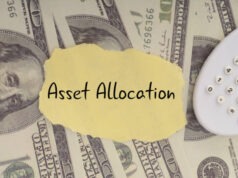
Ever since the advent of video games, players have sought out ways to progress, level up, and assert dominance. However, a more recent phenomenon in the gaming world is the intricate in-game economies and virtual currencies that power them. From the gold pieces in Old School RuneScape (OSRS) to the orbs and scrolls in Path of Exile (PoE), these currencies drive player engagement and create value systems within the virtual realms. But how do these economies work, and what impacts do they have on both the virtual and real world? Let’s delve in.
Understanding the Basics
At their core, in-game economies function similarly to real-world economies. There’s supply and demand, inflation, and a need for balance. Virtual currencies, whether it’s OSRS gold or PoE currency, act as the medium of exchange for goods and services within the game. This could be for weapons, armor, potions, or even cosmetic items that change the appearance of characters or elements of the gaming environment.
The Effects of Inflation and Deflation
One key difference between many in-game economies and real-world ones is the rate of inflation. In games, new currency is often introduced at a rapid rate as players complete quests, defeat enemies, or sell items. If not balanced correctly, this can lead to inflation, where the value of the currency drops, and prices rise. This can be frustrating for players, especially new ones, who might find that the purchasing power of the currency they earn is continually diminishing.
Conversely, deflation can occur if there’s a significant currency sink, where large amounts of virtual currency are removed from the game, often through mechanisms like fees or item repairs. This can increase the value of the currency, but can also stymie the game economy if players become too hesitant to spend.
The Real-World Implications
Virtual currencies might reside in a game, but they can have real-world implications. For instance, there’s a bustling market for buying and selling virtual goods and currencies. Some players are even able to turn a profit by trading or selling these virtual items for real-world money.
However, this has also led to issues such as gold farming, where players (sometimes entire operations) in low-wage countries grind for in-game currency to sell it to players in wealthier countries. This can lead to in-game inflation and can often be against the game’s terms of service.
Maintaining a Balanced Economy
For game developers, nurturing a balanced in-game economy is paramount. It’s not just about the numbers or in-game transactions, but about the holistic experience and long-term engagement of players. A well-calibrated economy can not only sustain players’ attention but can also drive the immersive feel of a game. The importance of this balance stems from several reasons:
- Player Engagement and Retention: An economy that feels fair and rewarding can motivate players to continue engaging with the game. On the contrary, an unbalanced economy can deter players, leading to churn or decreased playtime.
- Monetization Potential: A well-balanced in-game economy doesn’t just keep things fair; it also fosters trust. When players believe in the integrity and value of the virtual world, they’re more willing to open their wallets. It’s not just about buying items; it’s about investing in an experience they cherish.
- Leveling the Playing Field: In games where players go head-to-head, whether in teams or solo, an even economy is key. It gives every player, no matter how much they’ve played or paid, an equal shot at success. It’s this sense of a level playing field that fosters a healthy, vibrant gaming community.
- Anticipating the Game’s Pulse: With an economy that’s in tune, game developers can better anticipate how players might act. This foresight is invaluable, especially when rolling out new game elements or events, ensuring that they mesh seamlessly without jarring the game’s flow.
To achieve this harmony, many developers are now turning to specialized expertise. Hiring economists or experts in game theory has become more common in larger studios. These experts can provide insights, analyze player behavior, and create models that simulate potential changes to the game’s economy. Furthermore, with the rise of artificial intelligence and machine learning, predicting and managing virtual economic trends is becoming increasingly sophisticated, allowing developers to fine-tune their games for the best player experience.
In essence, the equilibrium of in-game economies is an art as much as it is a science. It requires careful planning, continuous monitoring, and a deep understanding of player psychology and behavior.
In Conclusion
In-game economies and virtual currencies offer a fascinating blend of game mechanics and real-world economics. These virtual assets shape player experiences and sometimes even spill over into the realm of real-world finance. As games continue to evolve, it’s clear that virtual economies will remain a crucial aspect of the gaming landscape.


































